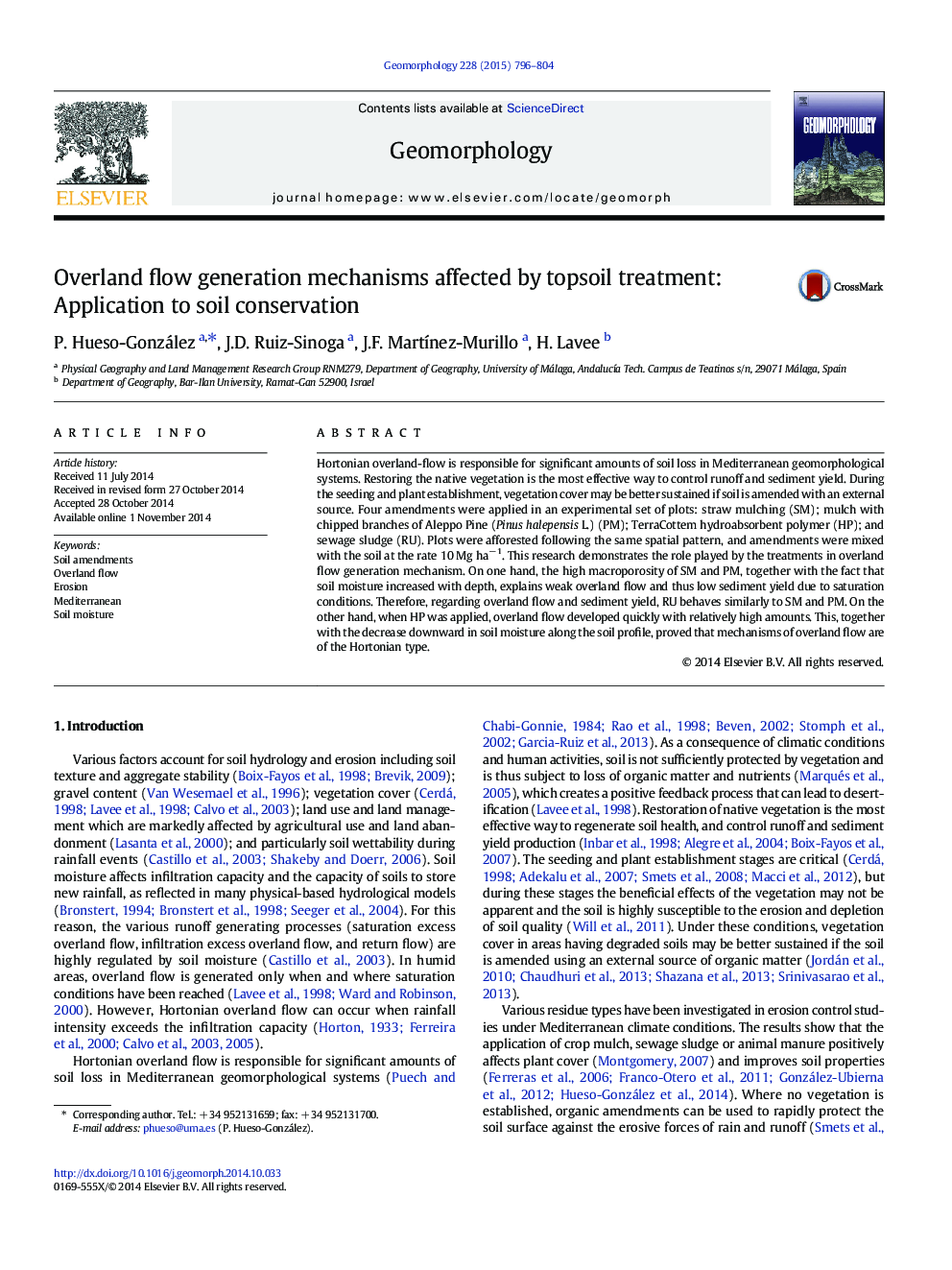| Article ID | Journal | Published Year | Pages | File Type |
|---|---|---|---|---|
| 6432350 | Geomorphology | 2015 | 9 Pages |
Hortonian overland-flow is responsible for significant amounts of soil loss in Mediterranean geomorphological systems. Restoring the native vegetation is the most effective way to control runoff and sediment yield. During the seeding and plant establishment, vegetation cover may be better sustained if soil is amended with an external source. Four amendments were applied in an experimental set of plots: straw mulching (SM); mulch with chipped branches of Aleppo Pine (Pinus halepensis L.) (PM); TerraCottem hydroabsorbent polymer (HP); and sewage sludge (RU). Plots were afforested following the same spatial pattern, and amendments were mixed with the soil at the rate 10 Mg haâ 1. This research demonstrates the role played by the treatments in overland flow generation mechanism. On one hand, the high macroporosity of SM and PM, together with the fact that soil moisture increased with depth, explains weak overland flow and thus low sediment yield due to saturation conditions. Therefore, regarding overland flow and sediment yield, RU behaves similarly to SM and PM. On the other hand, when HP was applied, overland flow developed quickly with relatively high amounts. This, together with the decrease downward in soil moisture along the soil profile, proved that mechanisms of overland flow are of the Hortonian type.
